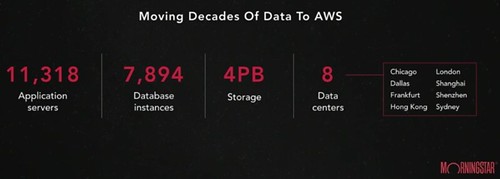Huawei X-Haul Uses Cloud to Support 5G and Network Slicing
 The X-Haul platform is targeted at backhaul and fronthaul needs.
The X-Haul platform is targeted at backhaul and fronthaul needs.
 The X-Haul platform is targeted at backhaul and fronthaul needs.
The X-Haul platform is targeted at backhaul and fronthaul needs.
The software ecosystem in high performance computing is set to be more complex with the leaps in capability coming with next generation exascale systems. Among several challenges is making sure that applications retain their performance as they scale to higher core counts and accelerator-rich systems.
Software development and performance profiling company, Allinea, which has been around for almost two decades in HPC, was recently acquired by ARM to add to the company’s software ecosystem story. We talked with one of the early employees of Allinea, VP of Product Development, Mark O’Connor about what has come before—and what the software performance …
Performance Portability on the Road to Exascale was written by Nicole Hemsoth at The Next Platform.
Last week the Brazilian government, through the Ministry of Science, Technology, Innovation and Communication, launched an open consultation as part of a process for reviewing the current structure and mission of the Brazilian Internet Steering Committee, the CGI.Br.
[Note: Portuguese version of this post included below.]
An evaluation and review of a Governance mechanism is natural and something that should not call the attention of anybody. The particularity here is that the announcement was unexpected, showing that the criteria to be used, the objectives of the review, and the process itself were not done in a multistakeholder manner.
In this video I work through some thoughts around grey failures—a big thanks to Ivan for discussing this with me, which was very helpful. The paper mentioned in the video can be found here.
The post Thoughts on Grey Failures appeared first on rule 11 reader.
 Other public cloud providers are ‘like Southwest Airlines.’ Oracle says it’s a private jet.
Other public cloud providers are ‘like Southwest Airlines.’ Oracle says it’s a private jet.

Enterprises won't move to the cloud. If they do, it's tantamount to admitting your IT group sucks. That has been the common wisdom. Morningstar, an investment research provider, is moving to the cloud and they're about as enterprisey as it gets. And they don't strike me as incompetent, it just seems they don't want to worry about all the low level IT stuff anymore.
Mitch Shue, Morningstar's CTO, gave a short talk at AWS Summit Series 2017 on their move to AWS. It's not full of nitty gritty technical details. That's not the interesting part. The talk is more about their motivations, the process they used to make the move, and some of the results they've experienced. While that's more interesting, we've heard a lot of it before.
What I found most interesting was the idea of Morningstar as a canary test. If Morningstar succeeds, the damn might bust and we'll see a lot more adoption of the cloud by stodgy mainstream enterprises. It's a copy cat world. That sort of precedent gives other CTOs the cover they need to make the same decision.
The most important idea in the whole talk: the cost savings of moving to Continue reading
 Both challenges are seen as boring and basic, but significant for enterprises.
Both challenges are seen as boring and basic, but significant for enterprises.
Evaluating the risk of space weather on your networks
The post Understanding a Bit about Space Weather appeared first on EtherealMind.
Big Data and the Internet of Things. The two seem to go hand in hand, even if there are some important differences between them. As IoT becomes a greater reality, it’s important that your network devops team is ready for its huge impact on your systems and networks. In this post, we’ll cover the basics, like the difference between big data and the Internet of Things, and then we’ll go into more detail about how to ensure your network is managing big data from IoT effectively.
The Internet of Things has been a hot topic in recent years. Little wonder, since its potential is increasing daily. From Bluetooth accessible devices such as smart appliances and smart homes, to wearable technology, to smart cars, to energy plants and wind turbines, smart technology is growing fast. Along with this technology is the need to support these devices both in network and storage. By 2025 McKinsey expects IoT will generate $11.1 Trillion annually. Companies are rushing to find ways to capitalize on IoT and the big data it will generate.
Big Data is an interesting concept Continue reading
The post Worth Reading: Automated Safe Cracking appeared first on rule 11 reader.